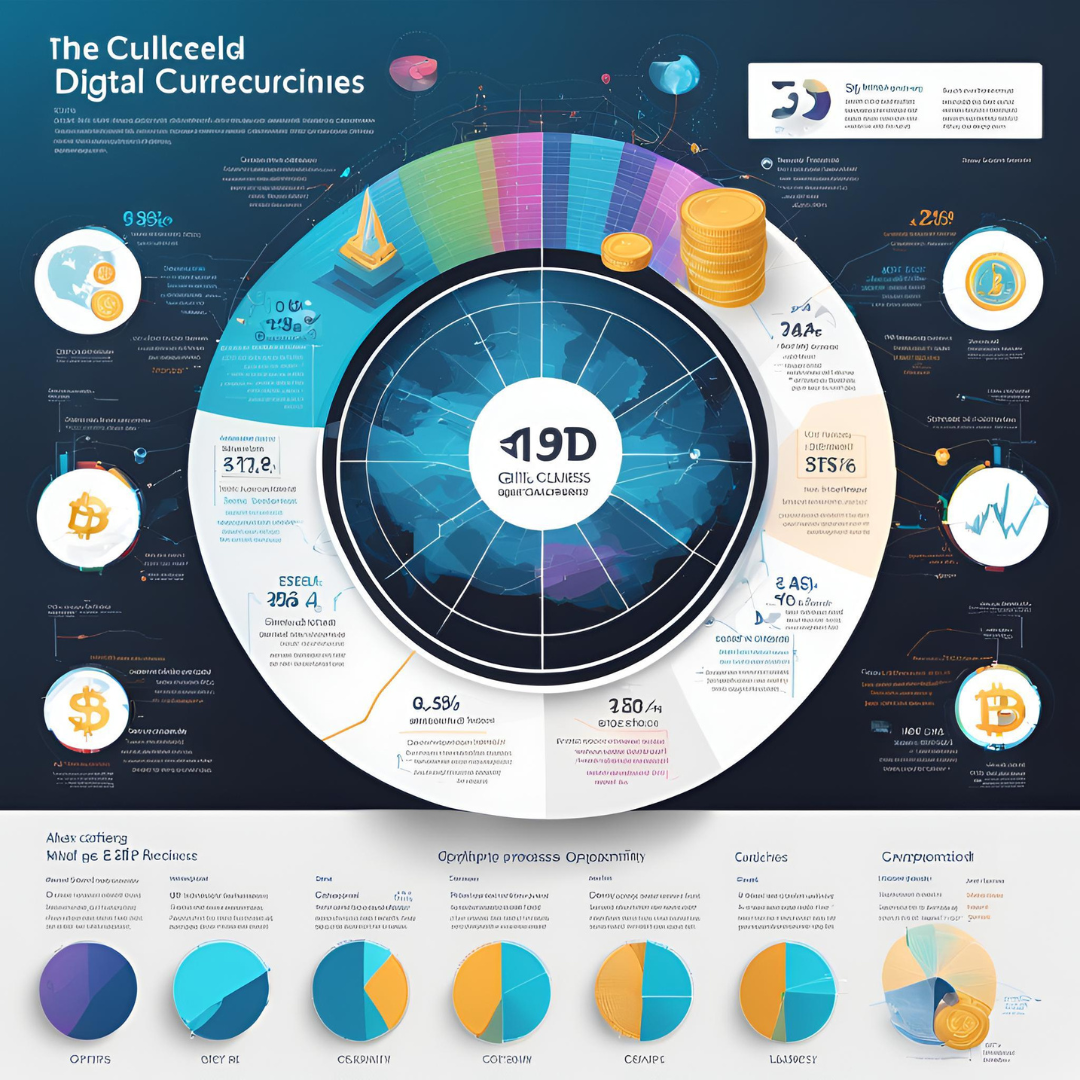The metaverse is rapidly transforming the way people interact, work, and play in digital environments. It represents a fully immersive virtual world where users can socialize, trade assets, and create experiences using digital avatars. At the heart of this futuristic digital space is cryptocurrency, which plays a crucial role in enabling transactions, ownership, and financial interactions within virtual worlds.
From buying virtual land and digital assets to earning real-world income, crypto is powering the economic backbone of the metaverse. This blog explores the role of cryptocurrency in the metaverse, how digital currencies function in virtual worlds, and the future of blockchain-powered economies.
1. Understanding the Metaverse: A Digital Universe
The metaverse is a 3D virtual environment where users can interact through digital avatars. It combines technologies such as virtual reality (VR), augmented reality (AR), artificial intelligence (AI), and blockchain to create an immersive experience.
Popular metaverse platforms include:
- Decentraland (MANA) – A blockchain-based virtual world where users can buy and sell digital land.
- The Sandbox (SAND) – A metaverse for gaming and content creation, powered by crypto transactions.
- Axie Infinity (AXS) – A play-to-earn game that allows users to earn cryptocurrency through gameplay.
- Meta’s Horizon Worlds – Facebook’s attempt at creating a social metaverse (though not blockchain-based).
In this digital universe, cryptocurrency acts as the primary mode of exchange, allowing users to buy virtual real estate, trade NFTs, and engage in financial transactions.
2. The Role of Cryptocurrency in the Metaverse
A. Digital Payments & Transactions
Cryptocurrency serves as the metaverse’s native payment system, enabling users to buy virtual goods, services, and experiences. Unlike traditional currencies, crypto transactions are fast, borderless, and decentralized—making them ideal for a global digital economy.
Users can purchase:
- Virtual land and properties
- NFT-based avatars and digital wearables
- Gaming assets like weapons and skins
- Exclusive access to virtual concerts and events
For example, in Decentraland, users buy virtual real estate using MANA tokens, while in The Sandbox, transactions occur with SAND tokens.
B. Ownership and Digital Assets (NFTs)
In the metaverse, digital ownership is possible through Non-Fungible Tokens (NFTs)—unique blockchain-based assets that prove ownership of virtual items.
NFTs in the metaverse include:
- Virtual land parcels (e.g., in Decentraland and The Sandbox)
- Avatars, clothing, and accessories
- Artwork and collectibles
- In-game assets and rewards
Since NFTs are stored on the blockchain, they provide true ownership—meaning that users can sell, trade, or transfer their assets without relying on a central authority.
C. Play-to-Earn (P2E) & Virtual Economy
One of the most exciting aspects of the metaverse is the rise of play-to-earn (P2E) gaming, where users earn cryptocurrency by participating in virtual activities.
Popular P2E platforms include:
- Axie Infinity (AXS & SLP tokens) – Players earn crypto by breeding, battling, and trading digital creatures called Axies.
- The Sandbox (SAND) – Users create, own, and monetize gaming experiences in the metaverse.
- Decentraland (MANA) – Participants earn money through virtual real estate, digital art, and in-game services.
The metaverse economy is shifting from a "pay-to-play" model to an "earn-as-you-play" system, offering users real financial opportunities in digital worlds.
D. Decentralized Finance (DeFi) in the Metaverse
Decentralized Finance (DeFi) is playing a major role in the metaverse by offering financial services without the need for banks or intermediaries.
DeFi applications in the metaverse include:
- Crypto lending & borrowing – Users can take loans using virtual assets as collateral.
- Staking rewards – Holding tokens in the metaverse earns passive income.
- Liquidity pools – Providing liquidity in metaverse-based decentralized exchanges (DEXs) can generate returns.
For example, metaverse platforms like Aavegotchi combine DeFi and gaming, allowing users to stake tokens while interacting in a virtual world.
3. Metaverse Tokens & Popular Cryptocurrencies
Several cryptocurrencies are powering the metaverse, each designed for specific use cases within virtual worlds.
Top Metaverse Cryptocurrencies:
- Decentraland (MANA) – Used for purchasing virtual land, avatars, and accessories.
- The Sandbox (SAND) – A utility token for transactions, governance, and staking within The Sandbox.
- Axie Infinity (AXS & SLP) – Used in Axie Infinity for breeding and earning in-game rewards.
- Enjin Coin (ENJ) – A gaming token used for NFT creation and trading.
- Render Token (RNDR) – Supports metaverse graphics processing and digital rendering.
These tokens are actively traded on major exchanges like Binance, Coinbase, and Uniswap, making them valuable beyond just virtual environments.
4. Challenges & Risks of Crypto in the Metaverse
Despite its potential, integrating cryptocurrency into the metaverse presents several challenges.
A. Scalability & High Transaction Fees
Metaverse platforms require fast and low-cost transactions, but many blockchain networks struggle with high gas fees and slow processing times.
✅ Solution: Layer-2 scaling solutions like Polygon (MATIC) and Solana (SOL) are being adopted to enhance speed and reduce costs.
B. Security & Fraud Risks
The metaverse is vulnerable to hacks, scams, and rug pulls involving fake NFT projects, phishing schemes, and compromised wallets.
✅ Solution: Use hardware wallets, enable two-factor authentication (2FA), and verify NFT authenticity before purchasing.
C. Regulatory Uncertainty
Governments are still figuring out how to regulate virtual assets and crypto-based economies, leading to legal uncertainties.
✅ Solution: Metaverse platforms must adapt to changing compliance laws while maintaining decentralization.
5. The Future of Crypto in the Metaverse
As the metaverse expands, cryptocurrency will continue to redefine digital economies by:
🔹 Enhancing interoperability – Users will seamlessly transfer assets across different virtual worlds.
🔹 Powering virtual jobs – People will earn real income through metaverse-based careers.
🔹 Revolutionizing e-commerce – Brands will accept crypto payments for virtual and real-world goods.
🔹 Integrating AI & blockchain – AI-driven virtual assistants will help manage crypto wallets and transactions.
With major companies like Meta, Microsoft, and Google investing in metaverse development, crypto’s role in virtual worlds will only become stronger.
Final Thoughts: A New Digital Economy
Cryptocurrency is fueling the metaverse revolution, providing seamless payments, ownership through NFTs, play-to-earn opportunities, and financial services via DeFi. As blockchain technology advances, the metaverse will evolve into a fully decentralized economy, where digital assets hold real-world value.
By understanding how crypto works in the metaverse, users can make informed decisions about investing, trading, and participating in virtual experiences. The future of digital interaction is here—and crypto is leading the way. 🚀





Leave a Reply